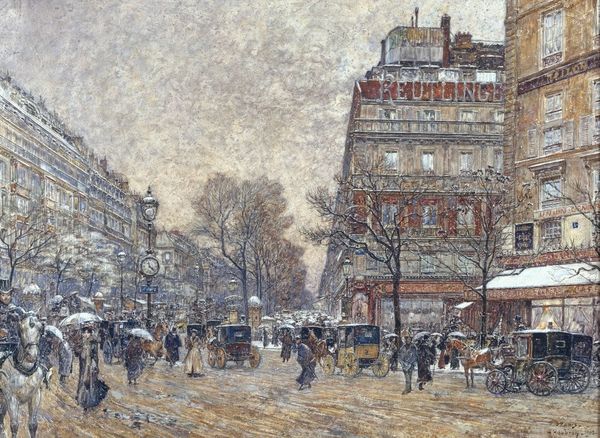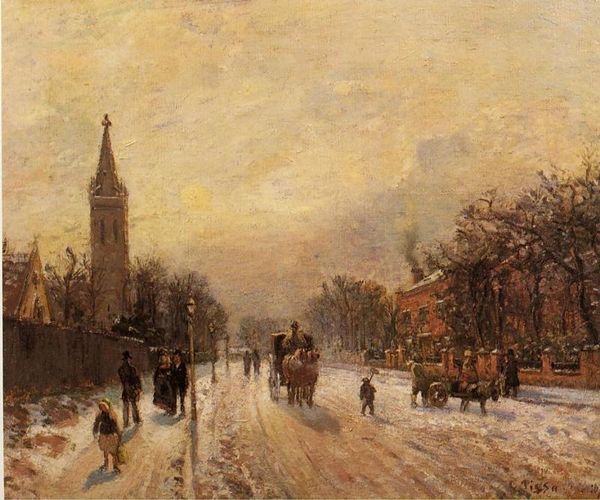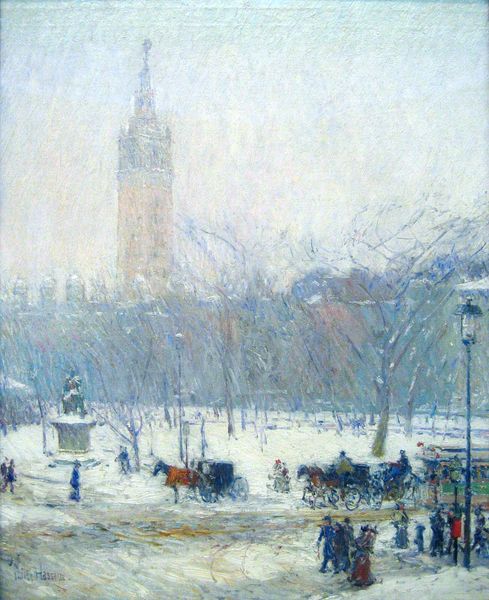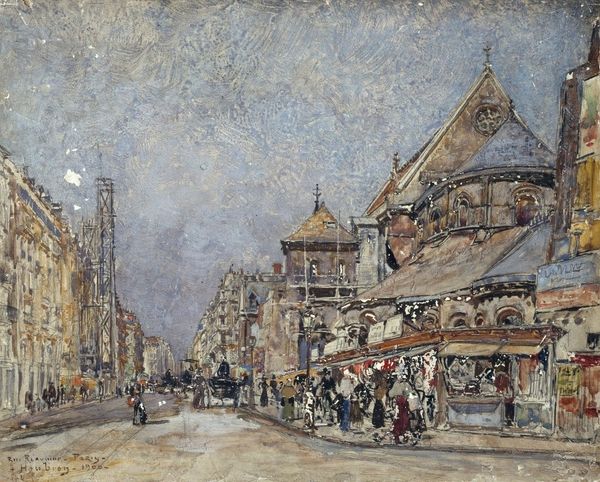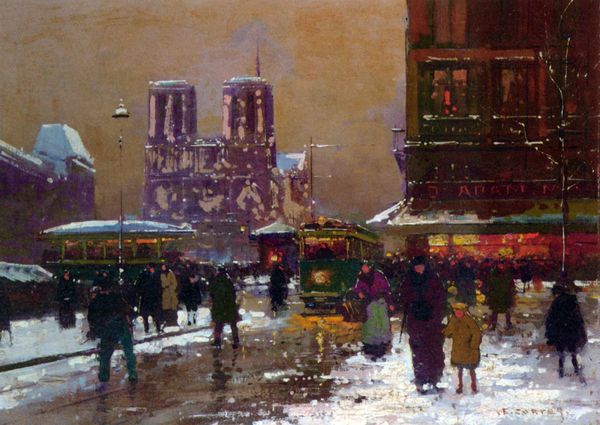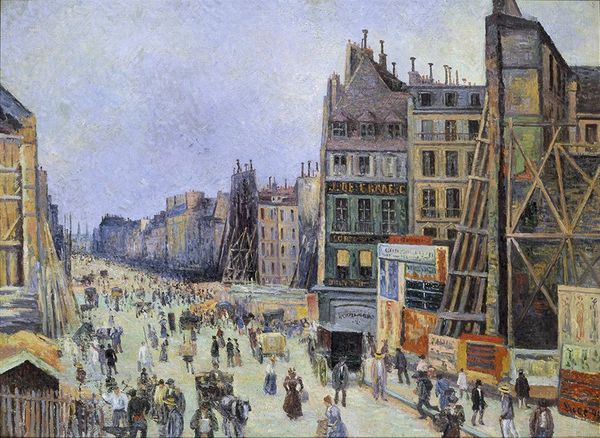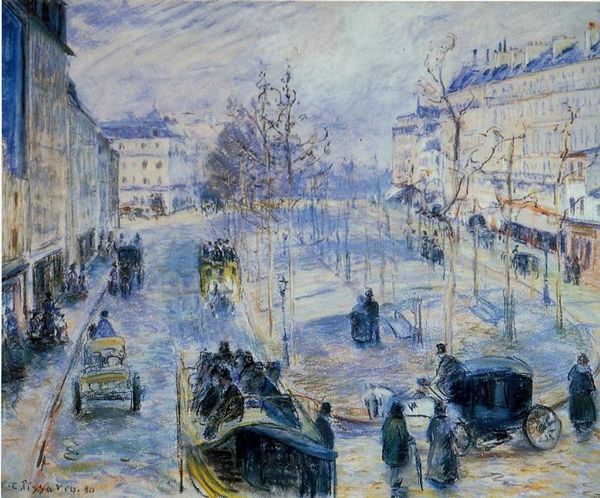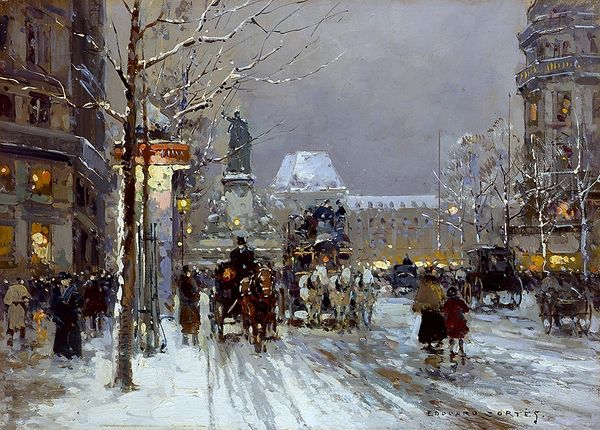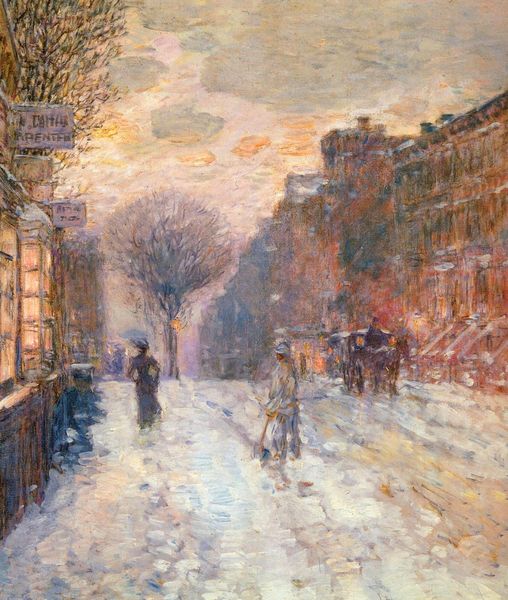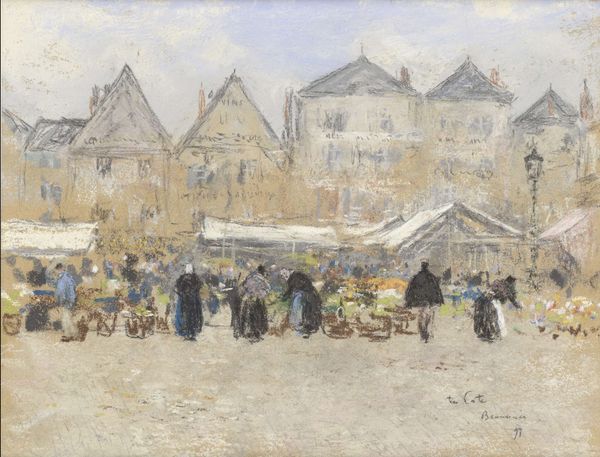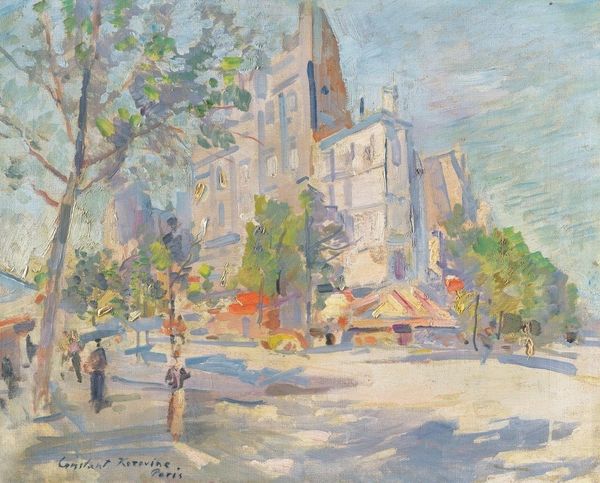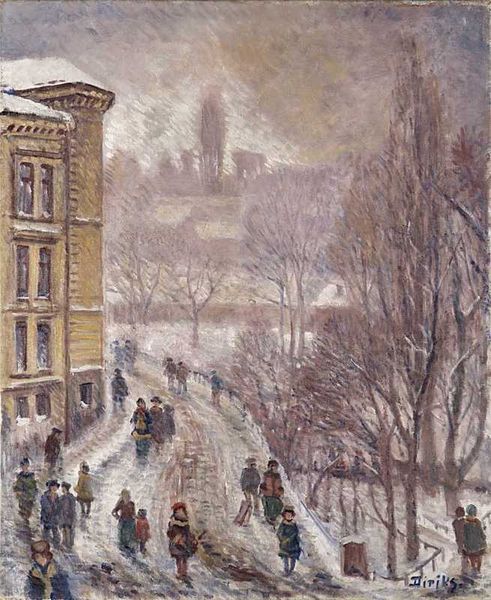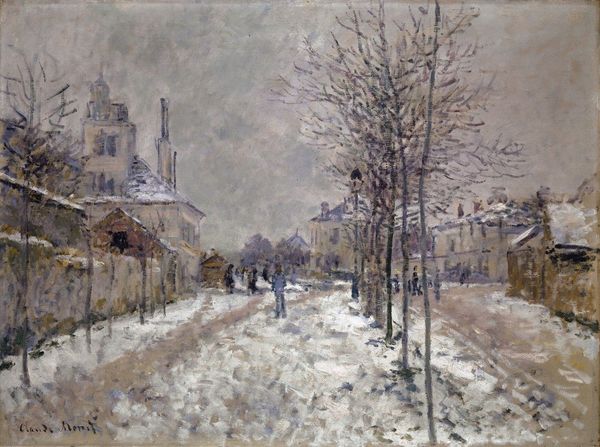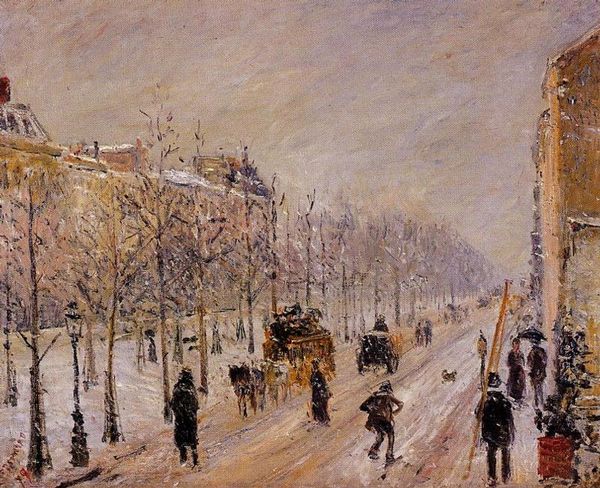
The Church of Saint Nicolas of the Fields, Saint Martin street 1908
0:00
0:00
maximemaufra
Private Collection
Copyright: Public domain
Editor: This is Maxime Maufra's "The Church of Saint Nicolas of the Fields, Saint Martin street," painted in 1908. It’s an oil painting showing a Parisian street scene with the church as the focal point. I'm immediately struck by how the architecture seems to loom over the people and vehicles; it feels almost oppressive. What kind of statement do you think Maufra might have been trying to make about the relationship between the church, the city, and its inhabitants? Curator: That's an astute observation. Considering the social context of the early 20th century, it's vital to unpack the role of the Church within the rapidly modernizing urban environment. Was Maufra perhaps highlighting the Church's diminishing influence, overwhelmed by the bustling modernity symbolized by the carriages and streets? Or could he be commenting on the persistent power structures represented by religious institutions even amidst societal change? What visual cues lead you to feel that the architecture is "oppressive?" Editor: The sheer size of the church compared to the people, and the muted, almost somber colors… they give it this imposing presence, like it’s a permanent fixture watching over everything. Also, I noticed that he uses visible brushstrokes and impasto, yet it’s still slightly hazy overall, adding to that distant and somewhat detached feel. Curator: Indeed. Maufra's stylistic choices shouldn’t be divorced from the broader artistic movements of his time. Post-Impressionism allowed artists to subjectively interpret and represent the changing modern landscape, which often entailed interrogating established social hierarchies. The street isn't merely a street, but a place of negotiation. It's the Church sharing a space with commerce, transit, and the everyday person. Do you think there might be a tension there? How is this reflected by the positioning of various elements in the scene? Editor: That tension definitely comes across. It makes me wonder how the people living at that time perceived the power and relevance of the Church in their daily lives. This makes the painting far more layered and meaningful. Curator: Exactly. By looking through a social and historical lens, Maufra’s artwork then transforms into more than just a pleasant street view; it becomes a powerful social commentary.
Comments
No comments
Be the first to comment and join the conversation on the ultimate creative platform.
